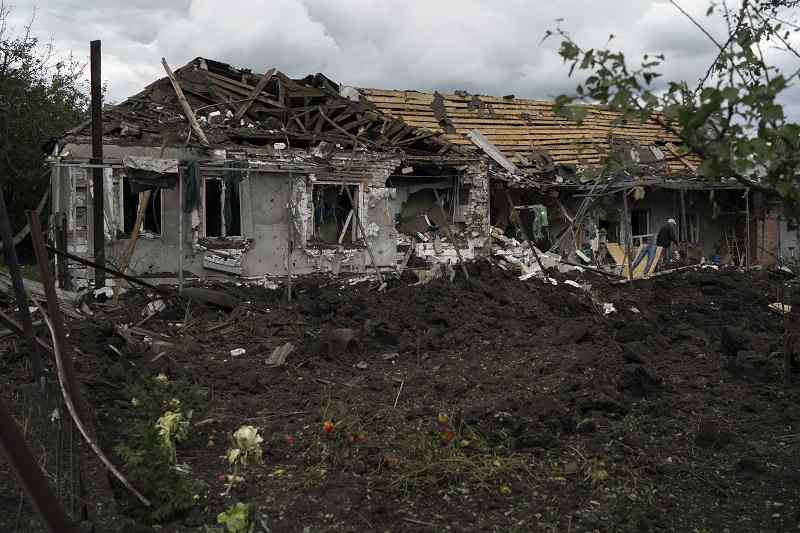What’s happening with Ukraine’s threatened nuclear plant

A man walks over the debris of a house that was heavily damaged after a Russian attack in Sloviansk, Ukraine, Tuesday, Sept. 6, 2022.
12:31 JST, September 7, 2022
Ukraine’s Zaporizhzhia nuclear power plant, built during the Soviet era and one of the 10 biggest in the world, has been engulfed by fighting between Russian and Ukrainian troops in recent weeks, fueling concerns of a nuclear catastrophe.
***
Here is a look at the current situation:
WHAT IS HAPPENING NOW
The plant has six reactors, only one of which was operational as of Saturday.
The shelling so far hasn’t damaged the plant’s reactors or spent nuclear fuel storage, but has repeatedly struck some auxiliary equipment.
On Monday, the plant was knocked off Ukraine’s electricity grid after its last transmission line was disconnected because of a fire caused by shelling.
Pending repairs, the plant’s only operational reactor was generating the power the plant needs for its own safety in so-called “island mode.”
Two inspectors from the U.N.’s atomic watchdog have remained at the plant following a visit by a larger team last week.
WHAT ARE THE POTENTIAL THREATS
Fighting near the plant has fueled fears of a disaster like the one at Chernobyl, where a reactor exploded and spewed deadly radiation, contaminating a vast area in the world’s worst nuclear accident.
Nuclear experts say while the buildings housing Zaporizhzhia’s reactors are protected by reinforced concrete that could withstand an errant shell or rocket, a disruption in the electrical supply could knock out cooling systems essential for the reactors’ safety. Emergency diesel generators can be unreliable.
“If power is lost in the fog of war, then we are in unchartered territory,” says Paul Dorfman, a nuclear safety expert at the University of Sussex in England.
WHAT IS “ISLAND MODE”
Functioning in “island mode” supplies power for the residual heat removal of the reactor cores and the spent fuel pools.
Experts say it is very unreliable.
Mycle Schneider, an independent policy consultant and coordinator of the World Nuclear Industry Status Report, said if the diesel generators fail, a core meltdown could occur within hours.
If the reactor is already turned off, the risk depends on the time since shutdown. The less time has passed, the more cooling is required, said Schneider.
While the pool containing Zaphorizhzha’s spent fuel is located inside the plant’s containment area, a serious reactor accident would likely affect the pool as well.
“Irradiated fuel overheats and catches fire spontaneously if it exposed to air and not cooled anymore,” said Schneider.







